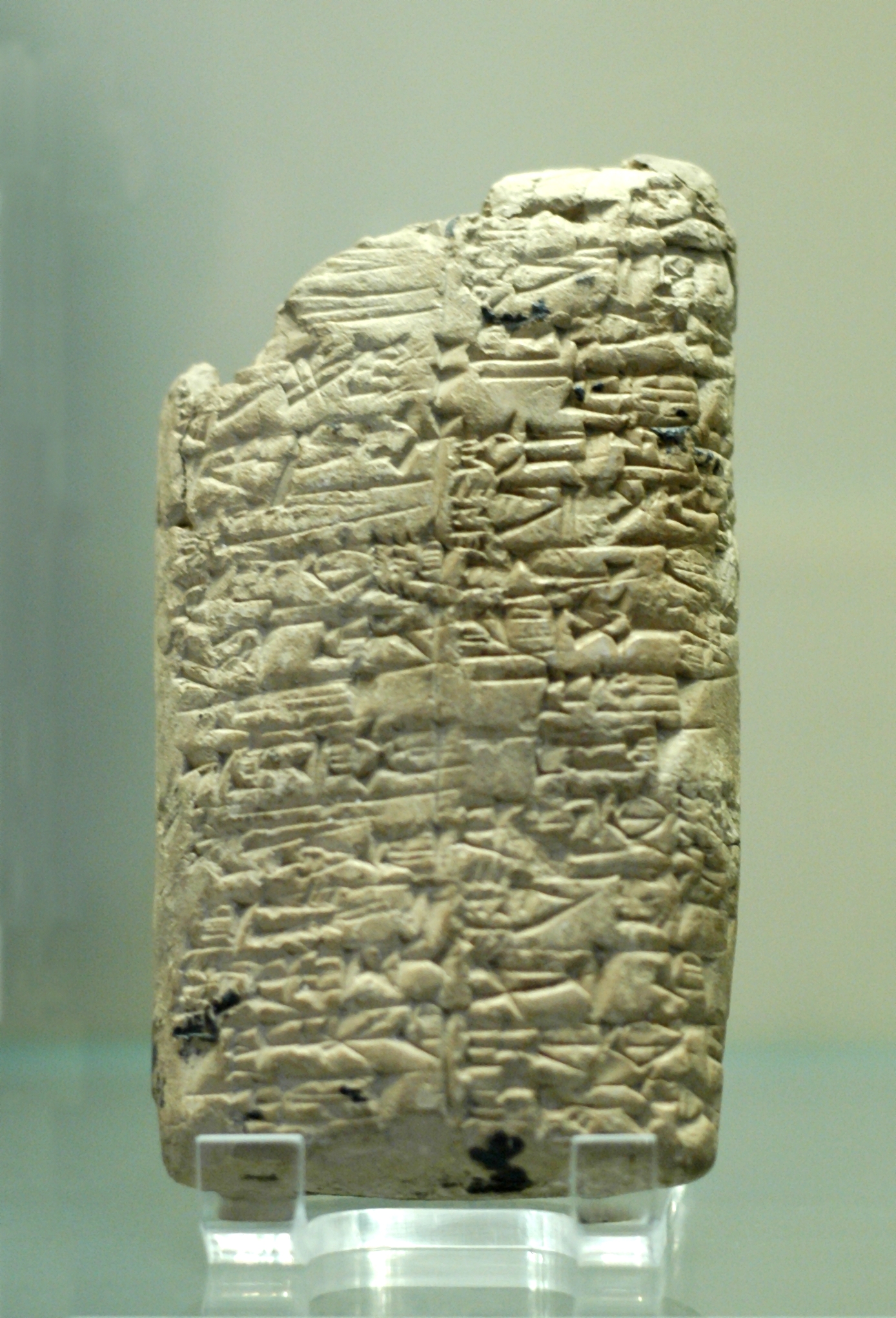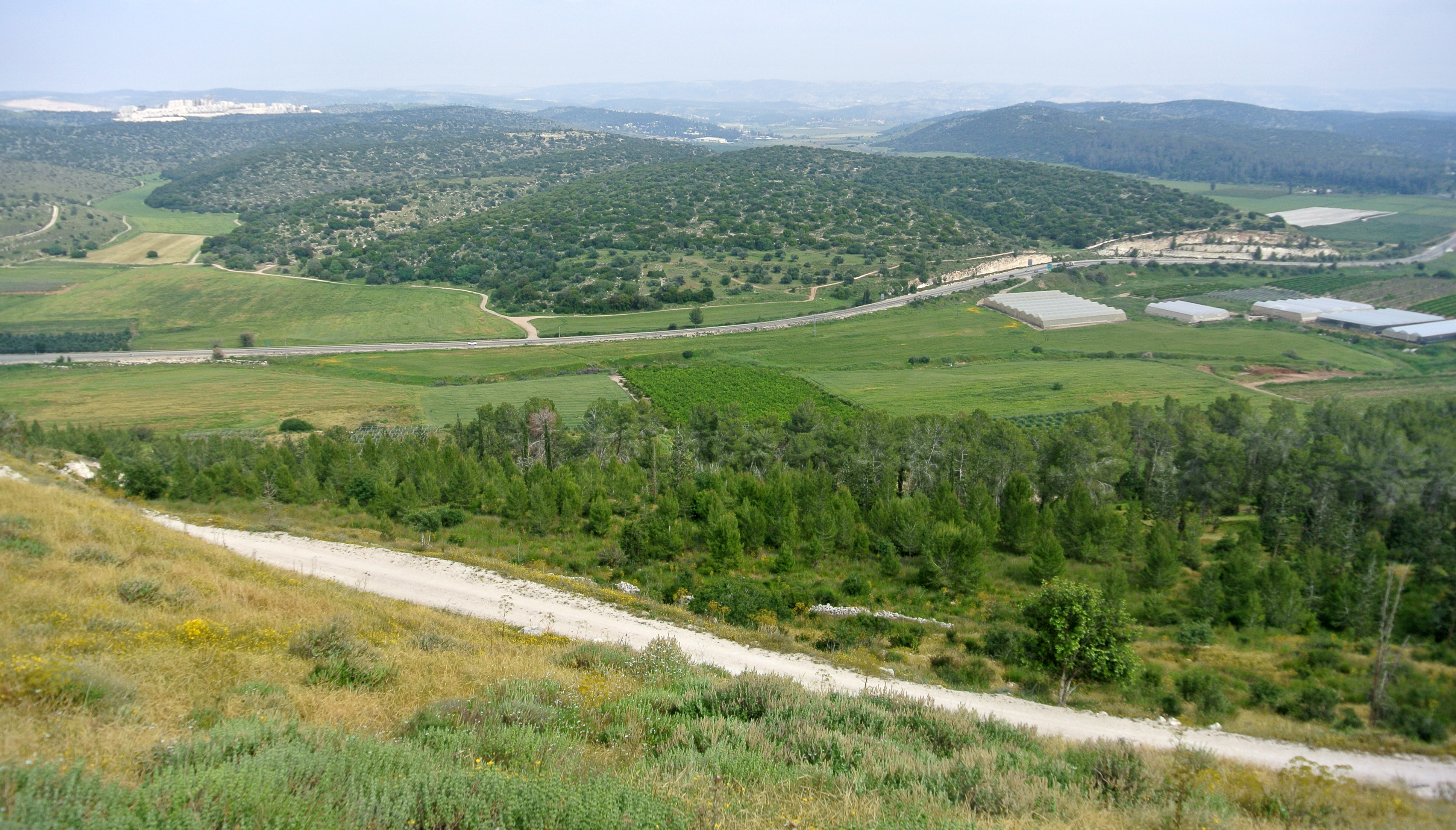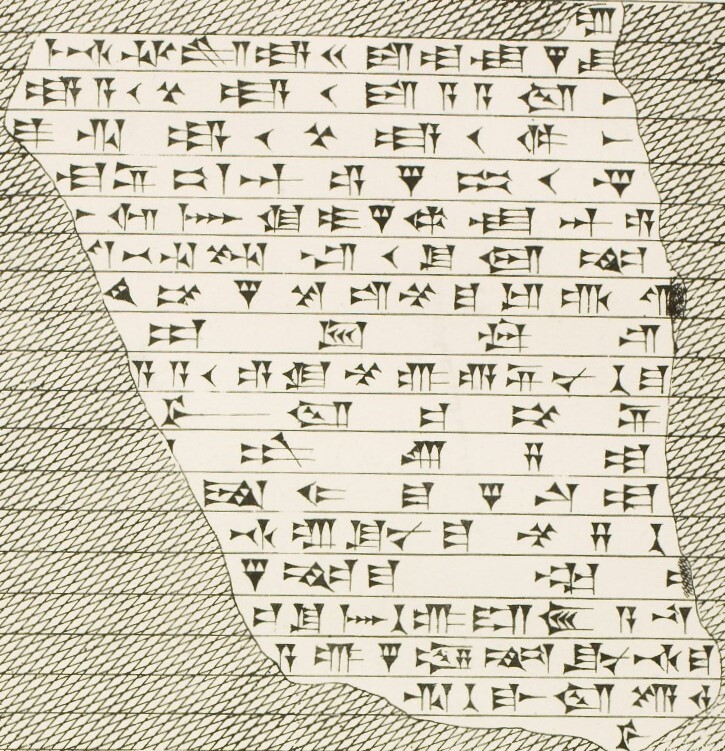|
Nadav Na'aman
Nadav Na'aman (Hebrew language, Hebrew: נדב נעמן; born in 1939 in Jerusalem) is an Israeli archaeologist and historian. He specializes in the study of the Near East in the second and first millenniums Current Era , BCE. His research combines the history of the Ancient Near East, archaeology, Assyrology, and the study of the Hebrew Bible. He possesses broad knowledge in all these four branches of research. Early life and education Na'aman was born on a kibbutz near Jerusalem and grew up in Kvutzat Kinneret, a kibbutz on the Sea of Galilee. His father was Professor Shlomo Naaman, who taught in the Department of General History of Tel Aviv University (TAU). After completing his Israel Defence Forces , IDF military service (1957-1960), he left the kibbutz in 1964 and studied archaeology and Jewish history. Career Na'aman received his doctorate in 1975 from Tel Aviv University with Yohanan Aharoni as thesis supervisor , supervisor, with a thesis on the importance of the Amarna ... [...More Info...] [...Related Items...] OR: [Wikipedia] [Google] [Baidu] [Amazon] |
Clay Tablet
In the Ancient Near East, clay tablets (Akkadian language, Akkadian ) were used as a writing medium, especially for writing in cuneiform, throughout the Bronze Age and well into the Iron Age. Cuneiform characters were imprinted on a wet clay tablet with a stylus often made of Reed (plant), reed (reed pen). Once written upon, many tablets were dried in the sun or air, remaining fragile. Later, these unfired clay tablets could be soaked in water and recycled into new clean tablets. Other tablets, once written, were either deliberately fired in hot kilns, or inadvertently fired when buildings were burnt down by accident or during conflict, making them hard and durable. Collections of these clay documents made up the first archives. They were at the root of the first library, libraries. Tens of thousands of written tablets, including many fragments, have been found in the Middle East. Most of the documents on tablets that survive from the Minoan civilization, Minoan and Mycenaean ... [...More Info...] [...Related Items...] OR: [Wikipedia] [Google] [Baidu] [Amazon] |
Israel Finkelstein
Israel Finkelstein (; born March 29, 1949) is an Israelis, Israeli archaeologist, professor emeritus at Tel Aviv University and the head of the School of Archaeology and Maritime Cultures at the University of Haifa. Finkelstein is active in the archaeology of the Levant and is an applicant of archaeological data in reconstructing biblical history. Finkelstein is the current excavator of Tel Megiddo, Megiddo, a key site for the study of the Bronze Age, Bronze and Iron Age, Iron Ages in the Levant. Finkelstein is a member of the Israel Academy of Sciences and Humanities an ''associé étranger'' of the French Académie des Inscriptions et Belles-Lettres, and International Honorary Member of the American Academy of Arts and Sciences. In 2005, he won the Dan David Prize for his study of the history of Israel in the 10th and 9th centuries BCE. In 2009 he was named ''chevalier'' of the ''Ordre des Arts et des Lettres'' by the French Minister of Culture, and in 2010, received a Doctorate ... [...More Info...] [...Related Items...] OR: [Wikipedia] [Google] [Baidu] [Amazon] |
Hezekiah
Hezekiah (; ), or Ezekias (born , sole ruler ), was the son of Ahaz and the thirteenth king of Kingdom of Judah, Judah according to the Hebrew Bible.Stephen L Harris, Harris, Stephen L., ''Understanding the Bible''. Palo Alto: Mayfield. 1985. "Glossary", pp. 367–432 In the Biblical narrative, Hezekiah witnessed the destruction of the northern Kingdom of Israel (Samaria), Kingdom of Israel by the Neo-Assyrian Empire under Sargon II in . He was king of Judah during the Assyrian siege of Jerusalem by Sennacherib in 701 BC.Encyclopædia Britannica (2009)Hezekiah Encyclopædia Britannica Online, 12 November 2009. The Historicity of the Bible, historical accuracy of King Hezekiah’s reign is a topic of academic discussion, with scholars debating the reforms and Assyrian events based on textual, archaeological, and external evidence. He is considered a very righteous king in both the Second Book of Kings and the Second Book of Chronicles. He is also one of the more prominent kings o ... [...More Info...] [...Related Items...] OR: [Wikipedia] [Google] [Baidu] [Amazon] |
Sennacherib
Sennacherib ( or , meaning "Sin (mythology), Sîn has replaced the brothers") was the king of the Neo-Assyrian Empire from 705BC until his assassination in 681BC. The second king of the Sargonid dynasty, Sennacherib is one of the most famous Assyrian kings for the role he plays in the Hebrew Bible, which describes his Sennacherib's campaign in the Levant, campaign in the Levant. Other events of his reign include his destruction of the city of Babylon in 689BC and his renovation and expansion of the last great Assyrian capital, Nineveh. Although Sennacherib was one of the most powerful and wide-ranging Assyrian kings, he faced considerable difficulty in controlling Babylonia, which formed the southern portion of his empire. Many of Sennacherib's Babylonian troubles stemmed from the Chaldean tribal chief Marduk-apla-iddina II, who had been List of kings of Babylon, Babylon's king until Sennacherib's father defeated him. Shortly after Sennacherib inherited the throne in 705BC ... [...More Info...] [...Related Items...] OR: [Wikipedia] [Google] [Baidu] [Amazon] |
Azekah
Azekah (, ''ʿazēqā'') was an ancient town in the Shephela ("lowlands of Judea") guarding the upper reaches of the Valley of Elah, about 26 km (16 mi) northwest of Hebron. The current '' tell'' (ruin) by that name, also known as Tel Azeka (, ''ʿtel azēqā'') or Tell Zakariya, has been identified with the biblical Azekah, dating back to the Canaanite period. Today, the site lies on the purlieu of Britannia Park. According to Epiphanius of Salamis, the name meant "white" in Hebrew. The ''tell'' is pear shaped with the tip pointing northward. Due to its location in the Elah Valley it functioned as one of the main Judahite border cities, sitting on the boundary between the lower and higher Shfela.Gadot, ''et al.'' (2012), pp. 196–206 Although listed in Joshua 15:35 as being a city in the plain, it is actually partly in the hill country, partly in the plain. Biblical history In the Bible, it is said to be one of the places where the Amorite kings were defeated by J ... [...More Info...] [...Related Items...] OR: [Wikipedia] [Google] [Baidu] [Amazon] |
Azariah
Azariah ( ''‘Ǎzaryāh'', " Yah has helped") is the name of several people in the Hebrew Bible and Jewish history, including: * Abednego, the new name given to Azariah who is the companion of Daniel, Hananiah, and Mishael in the Book of Daniel () * Azariah (guardian angel), the name given Raphael as companion of Tobias in the Book of Tobit. * Azariah, the guardian angel of Maria Valtorta to whom one of her handwritten books is dedicated * Azariah (prophet), a prophet () * Azariah (high priest) high priest of Israel () * Azariah II, another high priest, in the reign of Uzziah () * Eleazar ben Azariah, the Mishnaic sage * Uzziah, King of Judah, also known as Azariah *Two "commanders of the hundreds" who formed part of Jehoiada's campaign to restore the kingship to Joash in 2 Chronicles 23: Azariah, son of Jeroham and Azariah son of Obed. Other people named Azariah * Azariah Flagg (1790–1873), New York politician * Azariah S. Partridge (1834–1901), Michigan state represent ... [...More Info...] [...Related Items...] OR: [Wikipedia] [Google] [Baidu] [Amazon] |
Bulletin Of The American Schools Of Oriental Research
The ''Bulletin of the American Society of Overseas Research (BASOR)'', formerly the ''Bulletin of the American Schools of Oriental Research'', is one of three academic journals published by the American Society of Overseas Research. It began as the ''Bulletin of the American School of Oriental Research in Jerusalem'', in 1919. The Bulletin took on its current name in 2020. References External links * *JSTOR Early Journal Content, at the Internet Archive: Partial archive, 1919 - 1921Partial archive, 1922 - 1923 Religious studies journals Ancient Near East journals Academic journals established in 1919 Biannual journals {{asia-journal-stub ... [...More Info...] [...Related Items...] OR: [Wikipedia] [Google] [Baidu] [Amazon] |
Editio Princeps
In Textual scholarship, textual and classical scholarship, the ''editio princeps'' (plural: ''editiones principes'') of a work is the first printed edition of the work, that previously had existed only in manuscripts. These had to be copied by hand in order to circulate. For example, the ''editio princeps'' of Homer is that of Demetrios Chalkokondyles, Demetrius Chalcondyles, now thought to be from 1488. The most important texts of classical Greek and Roman authors were for the most part produced in ''editiones principes'' in the years from 1465 to 1525, following the invention of the printing press around 1440.Briggs, Asa & Burke, Peter (2002) ''A Social History of the Media: from Gutenberg to the Internet'', Cambridge: Polity, pp. 15–23, 61–73. In some cases there were possibilities of partial publication, of publication first in translation (for example from Greek to Latin), and of a usage that simply equates with first edition. For a work with several strands of manuscrip ... [...More Info...] [...Related Items...] OR: [Wikipedia] [Google] [Baidu] [Amazon] |
Azekah Inscription
The Azekah Inscription, is a tablet inscription of the reign of Sennacherib (reigned 705 to 681 BC) discovered in the mid-nineteenth century in the Library of Ashurbanipal. It was identified as a single tablet by Nadav Na'aman in 1974. It describes an Assyrian campaign by Sennacherib against Hezekiah, King of Judah, including the conquest of Azekah. Inscription The inscription on the combined tablet has been translated as follows: (3) ��Ashur, my lord, encouraged me and against the land of Ju ah I marched. Inthe course of my campaign, the tribute of the ki g(s)... (4) […with the migt of Ashur, my lord, the province of [Hezekah of Judah like [… (5) […">ezek">��with the mig">g(s)... (4) […with the migt of Ashur, my lord, the province of [Hezekah of Judah like [… (5) […the city of Azekah, his stronghold, which is between my [bo]rder and the land of Judah [… (6) [like the nest of the eagle? ] located on a mountain ridge, like pointed iron daggers without number ... [...More Info...] [...Related Items...] OR: [Wikipedia] [Google] [Baidu] [Amazon] |
Sargon II
Sargon II (, meaning "the faithful king" or "the legitimate king") was the king of the Neo-Assyrian Empire from 722 BC to his death in battle in 705. Probably the son of Tiglath-Pileser III (745–727), Sargon is generally believed to have become king after overthrowing Shalmaneser V (727–722), probably his brother. He is typically considered the founder of a new dynastic line, the Sargonid dynasty. Modelling his reign on the legends of the ancient rulers Sargon of Akkad, from whom Sargon II likely took his regnal name, and Gilgamesh, Sargon aspired to conquer the known world, initiate a golden age and a new world order, and be remembered and revered by future generations. Over the course of his seventeen-year reign, Sargon substantially expanded Assyrian territory and enacted important political and military reforms. An accomplished warrior-king and military strategist, Sargon personally led his troops into battle. By the end of his reign, all of his major enemies and r ... [...More Info...] [...Related Items...] OR: [Wikipedia] [Google] [Baidu] [Amazon] |





